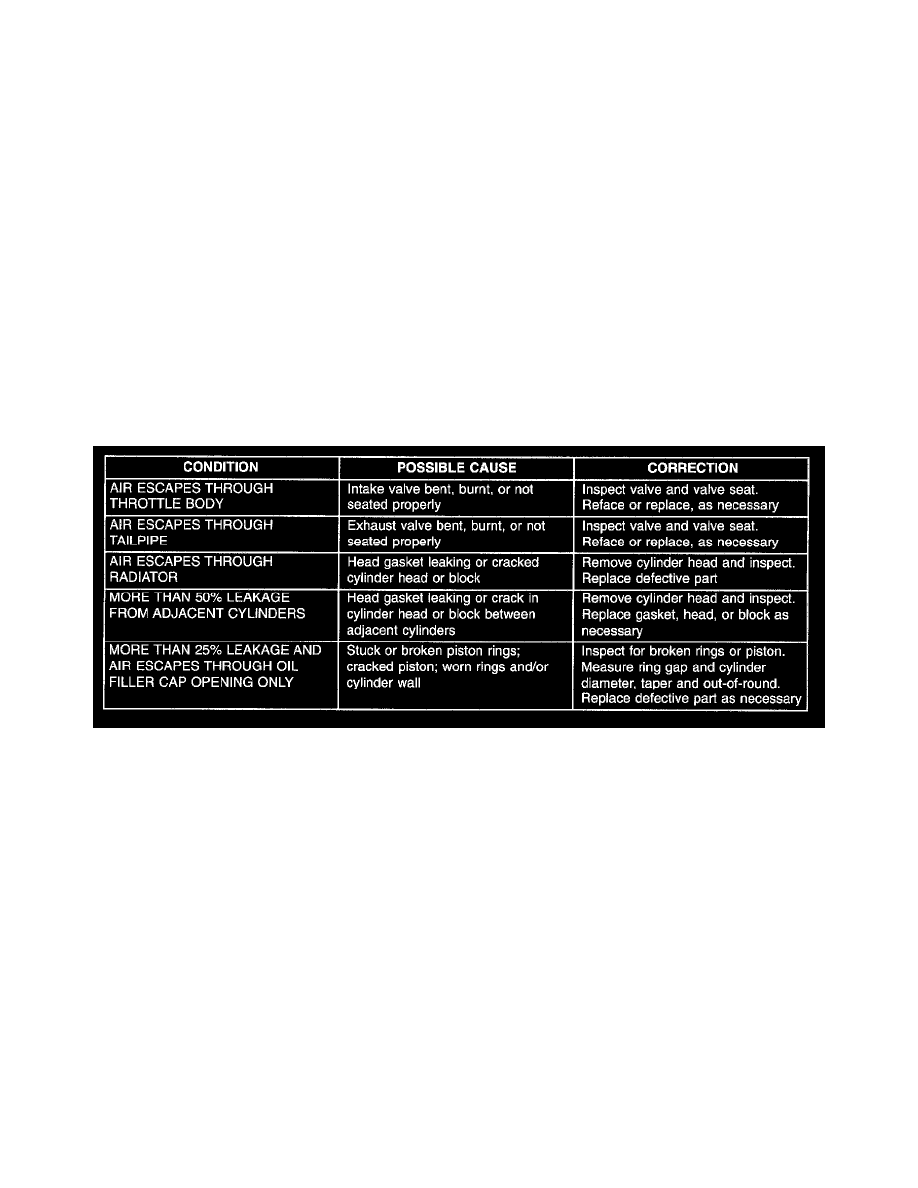Dakota R/T 2WD V8-5.9L VIN Z LDC (1999)

Compression Check: Testing and Inspection
The combustion pressure leakage test provides an accurate means for determining engine condition.
Combustion pressure leakage testing will detect:
^
Exhaust and intake valve leaks (improper seating).
^
Leaks between adjacent cylinders or into water jacket.
^
Any causes for combustion/compression pressure loss.
1. Check the coolant level and fill as required. DO NOT install the radiator cap.
2. Start and operate the engine until it attains normal operating temperature, then turn the engine OFF.
3. Remove the spark plugs.
4. Remove the oil filler cap.
5. Remove the air cleaner.
6. Calibrate the tester according to the manufacturer's instructions. The shop air source for testing should maintain 483 kPa (70 psi) minimum, 1,379
kPa (200 psi) maximum and 552 kPa (80 psi) recommended.
7. Perform the test procedures on each cylinder according to the tester manufacturer's instructions. While testing, listen for pressurized air escaping
through the throttle body, tailpipe and oil filler cap opening. Check for bubbles in the radiator coolant.
All gauge pressure indications should be equal, with no more than 25% leakage.
FOR EXAMPLE: At 552 kPa (80 psi) input pressure, a minimum of 414 kPa (60 psi) should be maintained in the cylinder.
Refer to the Cylinder Combustion Pressure Leakage Test Diagnosis chart found below.
CYLINDER COMBUSTION PRESSURE LEAKAGE DIAGNOSIS CHART
Cylinder Combustion Pressure Leakage Diagnosis Chart
